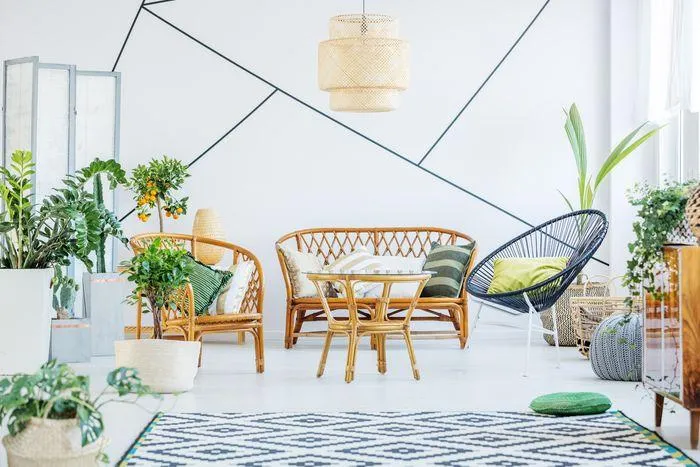Your Guide to Having Real Trees Indoors
If you’re feeling a little cooped up and missing the outdoors, bringing a real tree inside your home is a great way to infuse some natural beauty and greenery. But before you rush out to get a tree, there are a few things you should know to make sure your indoor tree thrives. In this article, I’ll cover the top questions people have about real trees for indoors and provide tips from my own experiences to help you choose and care for the perfect indoor tree.
What Types of Trees Are Best for Indoors?
- Evergreens like pine, fir, and spruce make excellent indoor trees since their needles stay green all year. They adapt well to indoor conditions and tend to be very forgiving.
- Citrus trees like dwarf lemon, lime, and orange trees are also great options. Their fragrant blossoms in winter lift the spirits! Plus you might get a bonus of fresh citrus.
- Flowering trees like flowering quince, redbud, and crabapple add colorful blooms. Just beware of lots of petals indoors!
I’d avoid deciduous trees that lose their leaves, as the mess could be epic indoors. Evergreens FTW!
How Big a Tree Can I Have Inside?
Tree size really depends on the space you have available. Aim for a tree that’s proportionate to your room. You don’t wanna be constantly dodging branches in your own home, right? As a general rule, small tables or desks can fit trees up to 3 feet, while medium trees of 4-6 feet work well in larger living areas. Anything taller may be too big unless you’ve got sky-high ceilings. Measure twice and cut once, as they say!
Where Should I Put My Indoor Tree?
Light is crucial for indoor trees to thrive. South-facing windows provide the most natural sunlight throughout the day. East or west windows are also good options. Avoid north-facing ones with no direct light. You’ll basically be setting your tree up for failure.
Also consider furnishings and high-traffic areas. You kinda wanna see and enjoy the tree, not have it crammed in a corner. But giving it some personal space prevents sap-covered furniture. Strike a balance!
How Do I Care for an Indoor Tree?
Proper care is key to keeping your tree looking fresh and fostering good indoor air quality. Here are the basics:
Water: Check soil moisture daily with your finger. Water when the top inch is dry. Too much or too little water are no bueno.
Light: As mentioned, bright light is essential. Rotate the tree quarterly so all sides get even exposure.
Temperature: Indoor trees like it cozy, around 70°F. Avoid drafty spots near doors or vents.
Fertilizer: Use a diluted liquid houseplant food every few weeks in the growing season. Too much can burn the roots.

Pruning: Trim any dead or broken branches. Be cautious since sap and sticky residue indoors are no fun to clean.
Pests: Check leaves frequently for signs of infestation and isolate the tree if needed. Prevention is key!
With a bit of TLC, your indoor tree will stay looking fresh for months. Just don’t forget to water lil homie!
How Can I Display an Indoor Tree Beautifully?
Gotta show off that tree, amirite? Here are some dope ways to stylish display it:
– Cluster low-light houseplants around the tree’s base for a lush vibe.
– Top with twinkly white lights or glass ornaments after dusk for a magical ambiance. Just be gentle removing so bark isn’t damaged.
– Fill the tree’s branches with pictures of nature scenes, family photos, or holiday cards for seasonal mini art displays. So cute!
– Place the tree on a plant stand, tree trunk pedestal, or tall pot to highlight its shape and grandeur. Class it up!
– Scatter pinecones, cinnamon sticks, or bay leaves around the tree’s roots. Your home will smell amazin basically!
With some creativity kind of like an indoor bonsai scene, your tree can be a true focal point that draws compliments. Have fun styling it to your tastes!

How Do I Transport an Indoor Tree Safely?
If you pick up your tree from a garden center rather than having it delivered, transportation is key. Here are some tips to get your tree home in one piece:
– Use a taped up cardboard box with air holes poked along the sides for smaller tabletop trees. Secure the trunk safely.
– For larger trees, lay it horizontally in the back of your car, station wagon, SUV, or pickup truck. Pad the branches with blankets.
– Cover the tree with a tarp if traveling long distances as wind and weather can dry out exposed needles.
– Stabilize tall trees by tying the trunk horizontally between two vertical supports like roof racks. Extra securing never hurts!
– Get an extra set of hands to lift the tree carefully. It’s no lightweight object, guys!
With a little planning like wrapping roots in burlap and tying twine loosenly, you’ll have that tree home no sweat. After its long journey indoors, give it water ASAP.
How Do I Prepare My Home for an Indoor Tree?
Getting your home ready prevents issues down the line. A lil prep work goes a long way:
– Place the tree in its final spot and check clearances, like if it fits under the ceiling, near vents, etc. Adjust plans if needed.
– Protect any surfaces nearby that sap could drip on with old sheets, plastic, or barrier materials. It’s a real pain to scrub out.

– Open windows before bringing the tree inside to air out the room and let sap fumes dissipate. They’re pretty pungent, folks!
– Have buckets, drip pans, or saucers ready to catch excess water under the tree to avoid soggy floors.
– Pick a spot with access to an electrical outlet for lights if using them. Safety first, am I right?
With a few precautions, your indoor tree setup will be stress-free. Just relax and enjoy the festive foliage!
I hope this covers pretty much every question or concern a person may have about bringing the outdoors inside with a real tree. Feel free to reach out if you need any other indoor tree tips or advice from my experiences. Now go get yourself an evergreen and happy decorating!
Things to Consider When Choosing an Indoor Tree
| Tree Type | Size | Water Needs | Light Requirements | Good For |
|---|---|---|---|---|
| Chinese Evergreen | Small to Medium | Moderate | Low Light | Offices, Living Rooms |
| Dracaena | Small to Medium | Moderate | Low Light | Offices, Bedrooms |
| Palm | Small to Large | Moderate | Bright Light | Living Rooms, Offices |
| Bonsai | Small | Moderate | Bright Light | Desktops, Window Sills |
| Jade Plant | Small | Moderate | Bright Light | Desktops, Windowsills |
FAQ
-
What kinds of real trees can I put indoors?
There are a variety of real tree species that do well indoors, such as ficuses, palms, and dwarf citrus trees. Basically any tree that doesn’t need a ton of sunlight can live inside.
-
How big can indoor trees get?
The size of indoor trees varies depending on the sort. Dwarf varieties will stay little, possibly under 6 feet. At the same time, some trees can reach the ceiling over time if you’re not careful! Always check the mature height of a species before adopting one as a houseplant.
-
Are real trees hard to look after indoors?
Caring for an indoor tree isn’t too tough as long as you water it routinely. The difficulty level basically hinges on providing the right conditions. As long as it gets partial shade and stays hydrated, most tree varieties will be fine indoors. You just need to pay attention to its needs.
-
Won’t trees make a mess inside?
While trees can drop leaves and fruit occasionally, most varieties won’t create an awful mess with proper care. Dwarf or slow-growing types that don’t fruit or loose branches are usually your best option mess-wise. Don’t get one that makes ginormous leaves or you may be sweeping a lot!
-
Can indoor trees improve air quality?
Studies show certain tree species are excellent at absorbing toxins from indoor air. English ivy, peace lilies, and bamboo palms top the list according to NASA research. Who knew houseplants could help filter out icky chemicals? It’s almost like having a little natural air purifier running around. Pretty cool!

-
What’s the best spot in the house for a tree?
When determining a tree’s home base, consider its sunlight and water needs. North-facing windows provide nice partial shade. However, east or west windows catch morning and afternoon rays. You can also put trees in high-traffic areas to enjoy their looks. But beware of pets or young kids if poisionous varieties are about. Placement takes some thinking for sure.
-
How do I know if my indoor tree is happy?
A content tree will put on healthy growth. Check leaf color (deep green means well-watered) and for new buds. You may even get flowers or fruit! On the other hand, brown crispy leaves probably mean it’s thirsty. Rotten spots show over-watering. So observe your tree to figure out if it’s digging the indoors or wants adjusting. A happy plant is an easy-care plant.
